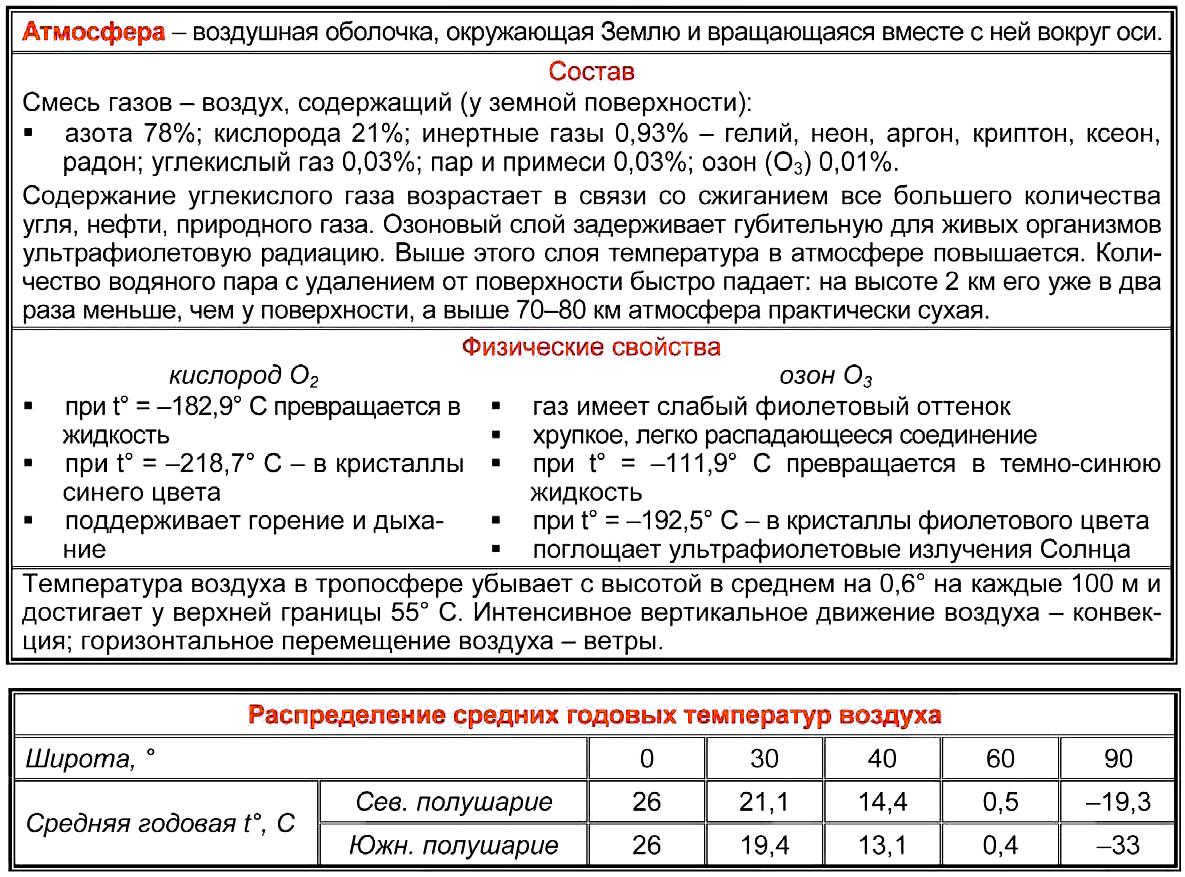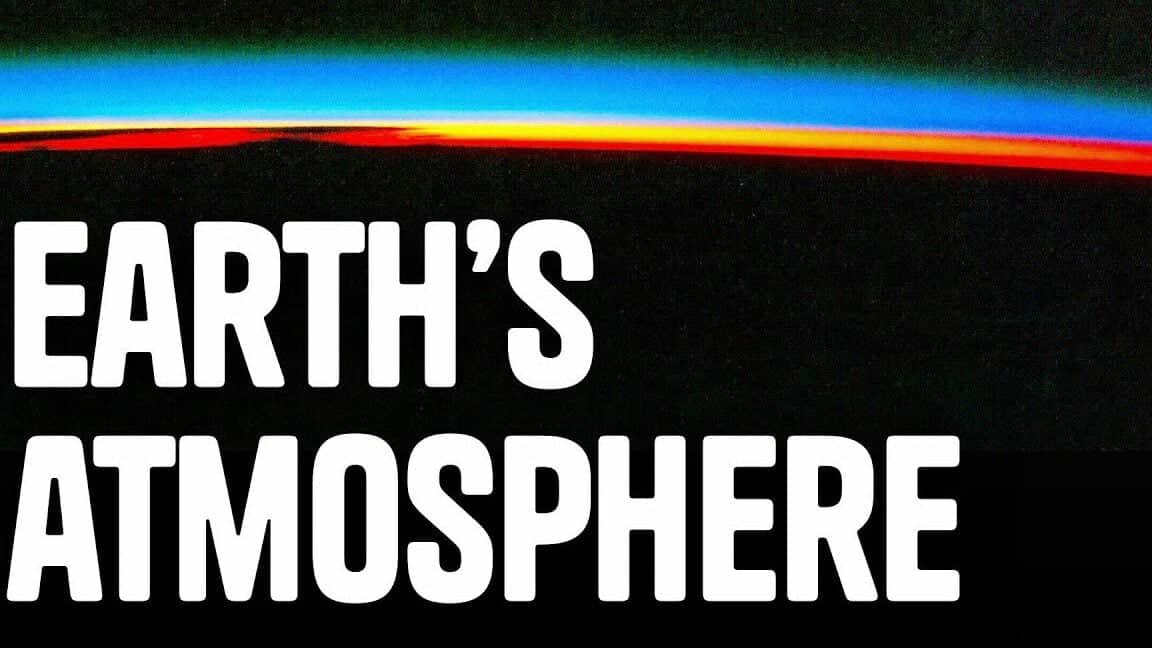There are only two approaches to living. The first is to disregard the existence of miracles. The second is to embrace a world where miracles abound.

Exam queries
Designed for students of all technical profile groups at Nvorossiysk College of Construction and Economics (NCCE).
Welcome to my webpage!
LET’S INTRODUCE OURSELVES
My name is Elena Viktorovna.
I am a teacher and tutor with 26 years of experience.
I assist students in understanding the school curriculum. I provide preparation for the USE.
We continue learning throughout our lives.
And if you have come to my website, then you definitely have one desire! The desire to learn!
- comprehend physics
- enhance grades in physics
- overcome the fear of lessons
- delve into the study of physics
- Get ready for the USE in physics
If you follow a systematic and step-by-step approach, physics becomes easy! If you need assistance, feel free to reach out to us!
We offer both online and in-person classes*. (*specifically available only in Novorossiysk).
What is the atmosphere?
The atmosphere – is a thin, mostly transparent shell of gases and other substances that surround the Earth.
The Earth’s gravity holds the atmosphere in place. The main components of the atmosphere are nitrogen (78.09%), oxygen (20.95%), argon (0.93%), and carbon dioxide (0.03%). The atmosphere also contains varying amounts of water (ranging from 0% to 4% in different locations), solid particles, and gases such as neon, helium, methane, hydrogen, krypton, ozone, and xenon. The scientific study of the atmosphere is known as meteorology.
Life on Earth would not be possible without the existence of an atmosphere, which provides us with the necessary oxygen for breathing. Moreover, the atmosphere plays a crucial role in maintaining a balanced temperature across the entire planet. Without it, certain areas would experience scorching heat while others would suffer from extreme cold, with nighttime temperatures dropping to -170°C and daytime temperatures soaring to +120°C. Additionally, the atmosphere acts as a protective shield, absorbing and scattering harmful radiation from the Sun and outer space.
Out of all the solar energy that reaches the Earth, approximately 30% is reflected back into space by clouds and the Earth’s surface. The atmosphere absorbs around 19% of the Sun’s radiation, while the Earth’s surface absorbs only 51%.
Air possesses weight, even though we are unaware of it and do not perceive the force exerted by the air column. At the level of the sea, this force has a magnitude of one atmosphere, or 760 mm of mercury column (1013 millibars or 101.3 kPa). As elevation increases, atmospheric force diminishes rapidly. The force decreases by a factor of 10 for each 16 km increase in elevation. This implies that at a force of 1 atmosphere at sea level, at an elevation of 16 km, the force would be 0.1 atm and at an elevation of 32 km, it would be 0.01 atm.
The density of the atmosphere in its lowest layers is 1.2 kg/m3. Each cubic centimeter of air comprises approximately 2.7*1019 molecules. At ground level, each molecule moves at roughly 1600 km/hour, with a collision frequency of 5 billion times per second with other molecules.
The density of air decreases rapidly as altitude increases. At an elevation of 3 kilometers, air density drops by 30%. Individuals who reside near sea level may experience temporary respiratory difficulties at this altitude. The maximum permanent human habitation is found at 4 km.
Structure of the atmosphere
The atmosphere is made up of various layers, which are classified based on their temperature, molecular composition, and electrical properties. These layers do not have distinct boundaries and undergo seasonal changes. Additionally, their characteristics vary at different latitudes.
Division of the atmosphere into layers based on molecular composition
The lower 100 km encompasses the Troposphere, Stratosphere, and Mesopause.
This region accounts for 99% of the atmosphere’s mass.
Molecules are not segregated by their molecular weight.
The composition is quite uniform except for a few minor local irregularities. The uniformity is maintained through continuous mixing, turbulence, and turbulent diffusion.
Water is one of the two components that are unevenly distributed. When water vapor rises, it cools and condenses, then falls back to the earth as precipitation – snow and rain. The stratosphere itself is very dry.
Ozone is another molecule that is distributed unevenly.
Heterosphere
Extends above the homosphere and includes the Thermosphere and Exosphere.
The separation of molecules in this layer is based on their molecular masses. Heavier molecules, such as nitrogen and oxygen, are concentrated at the lower part of the layer. The lighter ones, helium and hydrogen, dominate the upper part of the heterosphere.
Segmenting the atmosphere into strata based on their electrical characteristics.
Non-polar atmosphere
Comprises of electrically charged particles (ions) generated through the absorption of ultraviolet radiation.
The level of ionization fluctuates with elevation.
Diverse layers reflect both long and short radio waves. This permits radio signals that travel in a straight path to circumnavigate the spherical surface of the planet.
Auroras occur within these atmospheric strata.
The magnetosphere encompasses the upper portion of the ionosphere, extending up to roughly 70,000 km in altitude, depending on the intensity of the solar wind. The magnetosphere shields us from the highly energetic charged particles of the solar wind by ensnaring them within the Earth’s magnetic field.
Classification of the atmosphere based on temperature variations
The upper boundary of the troposphere varies based on the seasons and location. It spans from the Earth’s surface, reaching approximately 16 km at the equator and 9 km at the North and South Poles.
The prefix “tropo” signifies change. Alterations in tropospheric factors occur due to weather conditions, such as the movement of atmospheric fronts.
As elevation increases, the temperature decreases. Warm air ascends, cools, and descends back to the Earth’s surface. This phenomenon, known as convection, is caused by the movement of air masses. Winds in this layer primarily blow vertically.
This layer contains a higher concentration of molecules compared to all other layers combined.
The Stratosphere encompasses an altitude range of approximately 11 km to 50 km.
It contains a very thin layer of atmospheric gases.
The term “strato” denotes the presence of layers or the act of separating into layers.
The lower portion of the Stratosphere is generally tranquil. Many aircraft opt to travel in this region to avoid adverse weather conditions in the Troposphere.
The upper Stratosphere experiences powerful winds called high-altitude jet streams. These winds blow horizontally, reaching speeds of up to 480 kilometers per hour.
The Stratosphere is home to an ozone layer that is situated at an elevation of approximately 12 to 50 kilometers (depending on the latitude). While the concentration of ozone in this layer is a mere 8 ml/m3, it plays a vital role in absorbing the sun’s harmful ultraviolet rays, thus safeguarding life on Earth. An ozone molecule is composed of three oxygen atoms, whereas the oxygen molecules we inhale consist of just two oxygen atoms.
The Stratosphere is exceptionally chilly, with temperatures hovering around -55°C at its base and increasing as you ascend. This rise in temperature can be attributed to the absorption of ultraviolet rays by oxygen and ozone.
The Mesosphere stretches to heights of around 100 kilometers.
The temperature escalates swiftly as you climb higher.
The Thermosphere extends to altitudes of roughly 400 kilometers.
As altitude increases, temperature rises quickly due to the absorption of very short-wave ultraviolet radiation.
At altitudes of about 110-130 km above the Earth’s surface, meteors, also known as “shooting stars”, start to burn up.
The exosphere stretches beyond the Thermosphere and extends hundreds of kilometers into outer space.
In this region, air density is so low that the concept of temperature becomes meaningless.
When molecules collide, they frequently escape into space.


There are multiple definitions for the term “atmosphere.” Are you familiar with all of them and do you use this word accurately in your conversations?
The etymology of the term “atmosphere”
What is the composition of the atmosphere?
What causes pollution in the atmosphere?
Etymology of the term “atmosphere”
The term “atmosphere” has its origins in ancient Greek. It is derived from two Greek words: “atmos” meaning breath or vapor, and “sphaira” meaning ball or round body. The primary definition of this term refers to a spherical air shell that envelops the surface of our planet or any other celestial body in the universe.
In contemporary Russian language, the term “atmosphere” is used in various contexts:
– to describe the gaseous layer surrounding a planet or star;
– to refer to the air or gas mixture that can be suitable or unsuitable for breathing;
– to denote a unit of pressure equivalent to 1 kgf/sq cm;
– metaphorically, to describe the surrounding moral or emotional environment (e.g., the popular saying “They have their own atmosphere”).
What is the composition of the atmosphere?
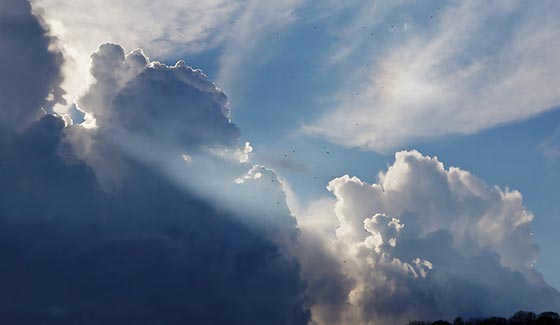
The Earth’s atmosphere is diverse: as it moves away from the Earth’s surface, it becomes less dense and undergoes changes in its composition.
The first layer adjacent to the surface is known as the troposphere. It spans approximately 16-17 kilometers and has the highest density. All atmospheric phenomena, such as cloud formation, air mass movement, and water evaporation and condensation, occur within this layer.
The subsequent layer is referred to as the stratosphere. It extends up to 90 kilometers above the Earth and has a significantly lower density. The only atmospheric phenomenon that can be observed in the stratosphere is the presence of nacreous clouds, which are the lightest, most transparent, and highest clouds.
Furthermore, situated at an elevation of approximately 25 kilometers, the stratosphere harbors the ozone layer, which comprises ozone molecules – three-atom oxygen. This layer serves as a shield for the Earth’s surface against excessively strong solar ultraviolet radiation, which would otherwise exterminate all living organisms on the planet.
Starting from an altitude of 90 kilometers, the ionosphere emerges – a stratum comprised of ionized air particles, formed due to the impact of solar radiation.

Thanks to the presence of this layer, long-distance radio communication has become possible: radio waves are reflected by the ionized layer and transmitted beyond the horizon line.
During nighttime, the boundary of the ionosphere elevates, thus widening the radio range of available stations compared to daytime.
In terms of chemical composition, the atmosphere is comprised of a mixture of gases: nitrogen (approximately 78%), oxygen (21%), and carbon dioxide (around 1%). Additionally, the lower atmosphere constantly contains water vapor.
What causes air pollution?
The issue of air pollution, caused by human activities, is becoming increasingly severe due to the growth of industrialization.
In order to generate heat and electricity, large amounts of coal and oil products are burned, releasing soot, carbon dioxide, and various gases into the atmosphere.
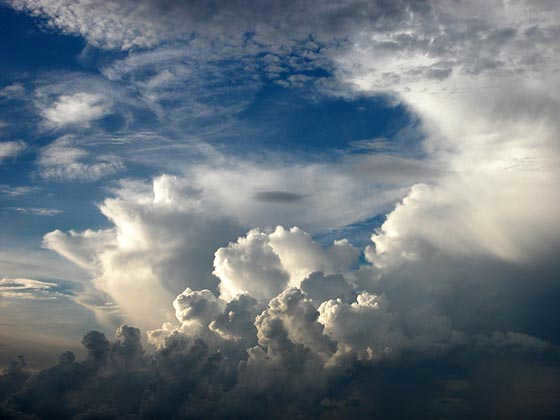

Every day, a vast amount of gaseous waste is emitted by numerous metallurgical, petrochemical, and other industries, which contaminate and taint the air we breathe.
Although most European countries have relatively good control over enterprises that could potentially pollute the atmosphere, factories in third-world countries release harmful substances into the atmosphere in virtually unlimited quantities.
Air pollution is also contributed by livestock farming through the production of a significant amount of organic waste. The decomposition of this waste results in the release of carbon dioxide and hydrogen sulfide. Additionally, automobiles emit combustion by-products into the air, contaminating the atmosphere with carbon monoxide, heavy metals, and other toxic substances.
Nowadays, one of the primary goals for humanity is to minimize air pollution and eventually eliminate hazardous and toxic industries in the long run.
It is crucial to ensure that the air we breathe remains pure, allowing future generations to inhabit a natural environment.
The atmosphere, which surrounds celestial bodies, varies in composition, chemical makeup, and physical characteristics from one planet to another. What are the key attributes of Earth’s atmosphere? What elements does it comprise of? When and how did it originate? Let’s delve into these questions and learn more about it.
Genesis of the Atmosphere
The atmosphere constitutes a blend of gases encompassing the Earth and bound by its gravitational pull. During the initial stages of its existence, our planet lacked a gaseous envelope. It materialized subsequently, undergoing multiple transformations. The precise characteristics of the primordial atmosphere remain partially elusive.
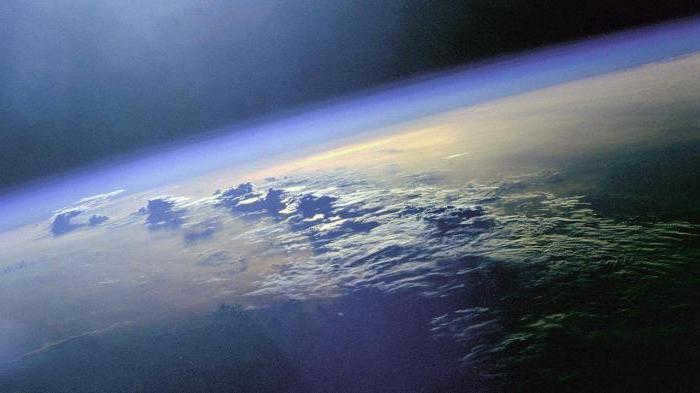
Scientists believe that the initial atmosphere of the Earth was acquired from the solar nebula and predominantly consisted of helium and hydrogen. However, due to the planet’s high temperatures and the impact of the solar wind, this original atmosphere was rapidly depleted.
Subsequently, the Earth’s mantle released gases through volcanic activity, leading to the formation of a new atmosphere. This second atmosphere was relatively thin and mainly comprised of greenhouse gases such as methane, carbon dioxide, ammonia, as well as water vapor and acidic compounds.
About two billion years ago, the composition of the atmosphere started to change, eventually reaching the state it is in today. This transformation was driven by various external processes, including weathering and solar activity, along with the emergence of the first bacteria and algae. These microorganisms played a crucial role by releasing oxygen into the atmosphere through their metabolic processes.
Structure and Characteristics of the Earth’s Atmosphere
The Earth’s atmosphere is a gas envelope that extends beyond the surface of our planet. It does not have a defined boundary and gradually merges with outer space, forming a seamless mass. On the inner side, it is in contact with the Earth’s crust and hydrosphere.
The composition of the atmosphere largely determines its fundamental properties. Primarily composed of gases, the atmosphere is predominantly made up of nitrogen (75.5%) and oxygen (23.1%). Additionally, it contains other gases such as argon, carbon dioxide, hydrogen, methane, helium, xenon, and more.

The concentration of substances remains relatively stable, with the exception of water and carbon dioxide. Water vapor levels fluctuate depending on geographical latitudes and can reach up to 2.5%. The amount of carbon dioxide in the atmosphere is influenced by vegetation. Additionally, the atmosphere contains combustion byproducts, sea salt, dust particles, and ice crystals.
Characteristics of the Earth’s Atmosphere
The atmosphere of our planet possesses various physical properties including pressure, humidity, temperature, and density. These properties exhibit different values as we move through the different layers of the atmosphere. The Earth’s atmosphere is composed of a multitude of molecules from various substances, all held in place by gravitational forces that keep them bound to the planet and draw them towards its surface.
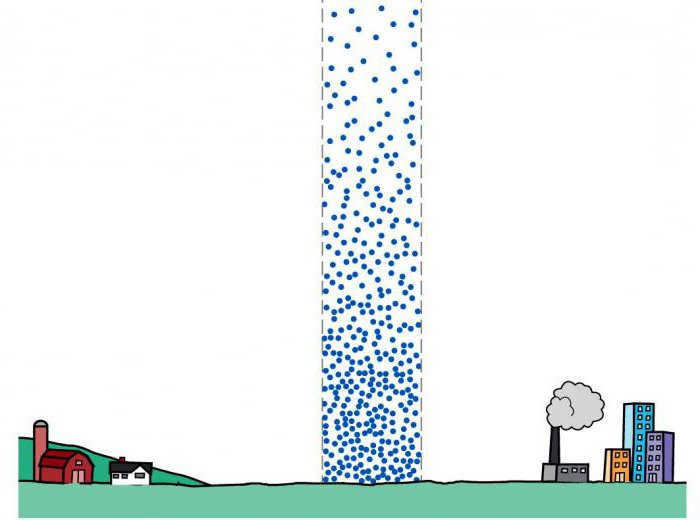
The density and pressure of the atmosphere are highest at the lowest point, gradually decreasing as altitude increases until they become almost undetectable in outer space. In the lower atmosphere, the pressure decreases by 1 mmHg for every 10 meters of ascent.
Unlike the Earth’s surface, the atmosphere is not directly heated by the Sun. As a result, the temperature increases the closer you get to the Earth’s surface. For every hundred meters of descent, the temperature decreases by approximately 0.6 degrees. In the upper part of the troposphere, it can reach as low as -56 degrees.
The water content, or humidity, has a strong impact on the air parameters. The total mass of the planet’s air is approximately (5.1-5.3) x 10^18 kg, with water vapor accounting for approximately 1.27 x 10^16 kg. As the properties of the atmosphere vary from one location to another, standard values are established to represent “normal conditions” on the Earth’s surface:
The configuration of Earth’s gaseous envelope
The composition of the gas envelope alters as altitude changes. The classification of the atmosphere is determined by its fundamental characteristics, leading to the division into multiple strata:
Temperature serves as the primary parameter for distinguishing these layers. Between each layer, there exist transitional regions known as pauses, where a consistent temperature gradient is maintained.
The troposphere represents the lowest stratum, with its boundary extending from 8 to 18 kilometers in altitude, varying according to latitude. The highest point is observed along the equator. The troposphere encompasses approximately 80% of the total atmospheric mass.
The exosphere, which is the outermost layer of the atmosphere, is influenced by the Sun’s activity, determining its lower boundary and thickness. On our planet, the exosphere starts at an altitude ranging from 500 to 1000 kilometers and extends up to one hundred thousand kilometers. At the lower region, it contains a high concentration of oxygen and nitrogen, while at the upper region it is enriched with hydrogen and various other lightweight gases.
Importance of the atmosphere
The atmosphere plays a crucial role in sustaining life on Earth. It is responsible for providing us with the air we breathe, which is essential for our survival. Without it, human beings would not be able to survive for more than a few minutes.
Furthermore, the atmosphere acts as a protective shield for the planet. It acts as a filter for solar radiation, dispersing its intensity and preventing it from causing excessive damage. This is particularly important as concentrated solar radiation can be harmful to living organisms.
Additionally, the atmosphere serves as a defense against celestial bodies. The upper layers of the atmosphere serve as a barrier, causing many meteorites and comets to burn up before they can reach the Earth’s surface. This helps to protect the planet from potential impacts and the associated damage.
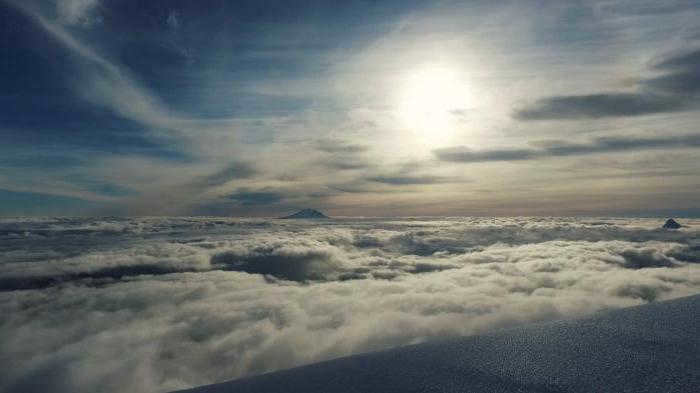
The climate and weather patterns are determined by the temperature, density, humidity, and pressure of the atmosphere. The atmosphere plays a crucial role in distributing heat across the planet, preventing extreme temperature fluctuations of up to two hundred degrees.
Additionally, the Earth’s atmosphere is vital for the cycling of substances, providing a habitat for certain organisms, and facilitating the transmission of sounds. Without it, life would not be able to exist on our planet.
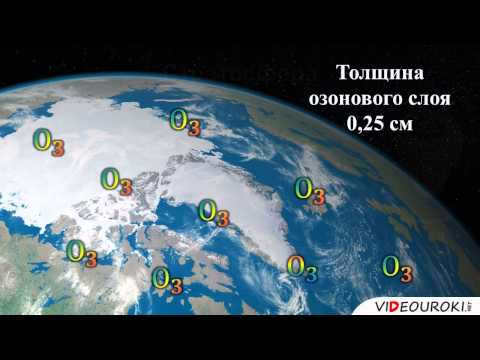
The Earth is surrounded by a layer of gas known as the atmosphere. This layer extends from the surface of the planet to an altitude of approximately 10,000 km. It is held in place by the Earth’s gravity and is composed of a mixture of gases collectively referred to as air.
Nitrogen is the most abundant component of the Earth’s atmosphere, making up about 78% of its composition. Oxygen is the second most abundant gas, comprising approximately 21% of the atmosphere, followed by argon at 0.9%. There are also trace amounts of other substances present, such as water vapor and carbon dioxide.

This gaseous mass is situated in five primary layers encircling the planet and carries out vital functions such as safeguarding the planet against small meteorite impacts, screening ultraviolet radiation, capturing heat, and enabling the existence of liquid water.
In a similar vein, the atmosphere molds the climate of Earth and enables various creatures, including airplanes, to take flight. However, the atmosphere hasn’t always been in its current state, as it originated during the formation of the planet and has undergone changes over time.
The structure of the Earth’s atmosphere
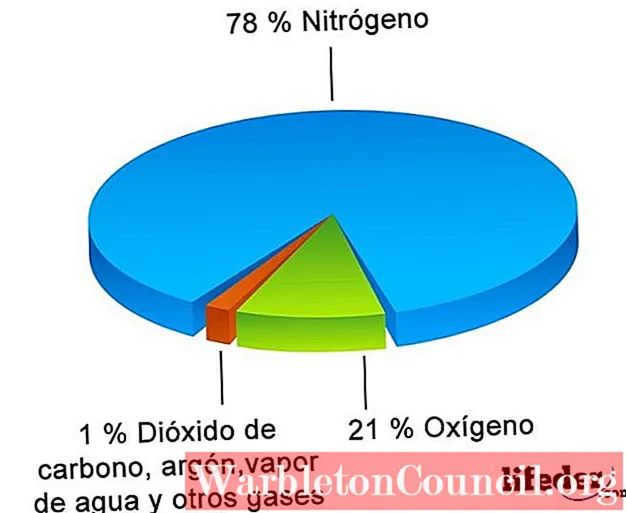
The Earth’s atmosphere is composed of a combination of gases known as air. The air’s composition varies in a concentration gradient that extends from the Earth’s surface to the outer space boundary.
When discussing the atmosphere’s composition, we are referring to the air’s composition in the troposphere, which is in direct contact with the planet’s surface. This layer contains the highest concentration of air and is primarily composed of nitrogen (N2) and oxygen (O2).
Nitrogen accounts for 78% of the total composition, while oxygen makes up 21%, leaving approximately 1% for various other gases. The most significant of these is argon, which accounts for nearly the remaining 1%, while the remaining gases exist in extremely small quantities.
Carbon dioxide (CO₂) is one of the other gases present in the Earth’s atmosphere. While its concentration is currently at approximately 0.041%, it is on the rise due to human activities. Another important gas is water vapor, which has a variable concentration that can reach up to 0.25%. These gases possess oxidizing properties, which contribute to the unique qualities of the Earth’s atmosphere.
The atmospheric layers
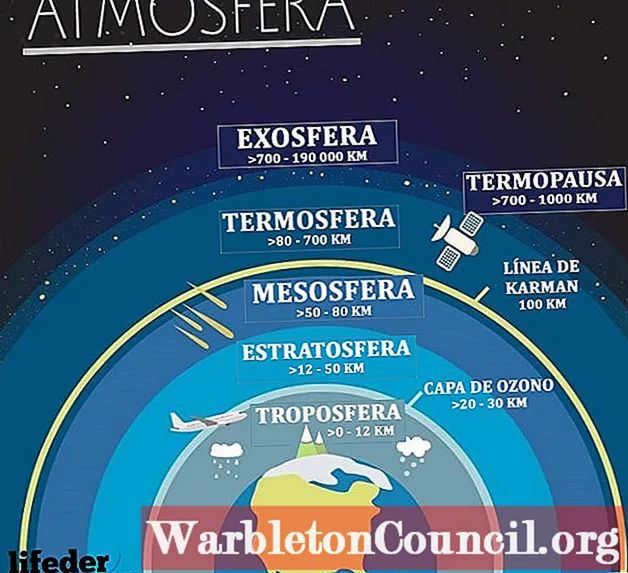
The Earth’s atmosphere is composed of five distinct layers:
Troposphere

The troposphere is the layer of the Earth’s atmosphere that extends from the surface up to an altitude of approximately 12 to 20 km. Its name is derived from the Greek word “tropes,” meaning change, because of its constantly changing nature. It is thinnest at the poles and widest at the equator.
About three-quarters of the total mass of gases in the atmosphere is concentrated in the troposphere, mainly due to the pull of gravity from the Earth. This layer is essential for supporting life on Earth, as well as for the occurrence of meteorological phenomena and commercial airplane flights.
The troposphere also plays a crucial role in various atmospheric biogeochemical cycles, including the cycles of oxygen, water, carbon dioxide (CO2), and nitrogen. As one ascends in altitude within the troposphere, the temperature decreases, and the boundary between the troposphere and the next layer is known as the tropopause.
Stratosphere
can be rephrased as
The Earth’s Stratosphere
.

The atmosphere is situated at an altitude of about 50 km, 12 to 20 km above the earth’s surface, and is divided into two layers based on air density. The lower layer contains the denser cold air, while the upper layer contains the lighter warm air. This division gives the atmosphere its name, with the prefix “layers” referring to its distinct layers.
The boundary between the atmosphere and the next layer is known as the stratopause. Within the stratopause lies the vital layer for life on Earth, known as the ozone layer.
Due to its ability to absorb heat, the temperature of the stratosphere increases as altitude increases, which is different from the temperature changes observed in the troposphere.
Ozone layer (ozonosphere)
The ozonosphere is a layer that consists of ozone (O3). It is created through the biochemical dissociation of oxygen (O2) due to ultraviolet radiation from the sun. Consequently, when this radiation comes into contact with an oxygen molecule, it breaks apart into two separate oxygen atoms.
Afterwards, because atomic oxygen (O) is highly reactive, it combines with oxygen molecules (O2) and forms ozone (O3).
Mesosphere
Mesosphere is a company that specializes in providing software solutions for data centers and cloud computing. They offer a range of products and services that help organizations manage and optimize their infrastructure.
Mesosphere’s flagship product is the Mesosphere Datacenter Operating System (DC/OS), which is a distributed operating system that enables organizations to run and scale their applications on a wide range of infrastructure, including physical servers, virtual machines, and containers.
In addition to DC/OS, Mesosphere also offers a number of other products and services, including Mesosphere Kubernetes Engine (MKE) which provides a managed Kubernetes service, and Mesosphere Marathon, which is a container orchestration platform.
Overall, Mesosphere’s goal is to simplify the management and operation of data centers and cloud infrastructure, allowing organizations to focus on their core business objectives.

It gets its name from the term “meso,” which means middle, because it is situated between the stratosphere and the thermosphere at an elevation of approximately 50 to 80 km. This is the region where meteors burn up, creating shooting stars.
In this region, there is still enough gas present to create friction and generate heat, which is not the case in the higher layers. The mesopause marks the boundary between this layer and the next.
The Thermosphere is a layer of the Earth’s atmosphere that is located above the mesosphere and below the exosphere. It is known for its high temperatures and low density. The Thermosphere is also where the Northern and Southern Lights occur.

The thermosphere gets its name from the Greek word thermos, which means heat, as it has a temperature of 4,500 degrees Fahrenheit (approximately 2,482 ºC). However, due to the low density of gas molecules, this heat is not efficiently transferred and sound cannot propagate through this layer.
Spanning from 80 to 700 kilometers above sea level, the thermosphere is home to the International Space Station and numerous satellites in low orbit. The transition between the thermosphere and the next layer is marked by the thermopause.
Exosphere
The exosphere is the outermost layer of the Earth’s atmosphere, extending from about 500 kilometers (311 miles) above the surface to the edge of space. It is a region of extremely low density and contains mainly hydrogen and helium atoms. The exosphere is where the atmosphere gradually merges with the vacuum of space. It is also the region where satellites and spacecraft orbit the Earth.

The exosphere, the outermost layer of Earth’s atmosphere, gets its name from the prefix exo which means outside. Beyond the exosphere lies outer space. This layer is situated between 700 and 10,000 km above sea level and is the most extensive layer of the atmosphere.
Composed mainly of lighter gases such as hydrogen and helium, the exosphere has a very low density. As a result, the molecules in this region are widely spaced apart. Additionally, the exosphere is a very cold region and lacks oxygen. It is primarily inhabited by meteorological and high-orbit satellites.
Roles of the Earth’s atmosphere
The Earth’s atmosphere serves various roles that establish the circumstances necessary for the existence of life as we comprehend it.
Essential gases
The atmosphere encompasses gases vital for the current form of life, primarily oxygen and CO2.
Atmospheric erosion
The Earth’s surface is shielded from the onslaught of numerous small meteors by the presence of the mesosphere. Within this atmospheric layer, although air is scarce, there is sufficient amount to generate friction, causing meteors to incinerate and disintegrate for the most part.
Filtering Ultraviolet Radiation
The stratospheric ozone layer plays a crucial role in filtering a significant amount of ultraviolet radiation, thereby preventing it from reaching the surface of the Earth. This filtration process is essential for numerous earth-related phenomena, including the sustenance of life, as exposure to this type of radiation can lead to genetic mutations and the development of cancer.
Greenhouse effect
The phenomenon known as the greenhouse effect refers to the trapping of heat in the Earth’s atmosphere by certain gases, such as carbon dioxide and methane. This trapping of heat leads to an increase in the Earth’s temperature, which can have significant impacts on the planet’s climate and ecosystems.
The greenhouse effect occurs naturally and is essential for life on Earth. Without it, the Earth would be too cold to support life as we know it. However, human activities, such as the burning of fossil fuels and deforestation, have increased the concentration of greenhouse gases in the atmosphere, leading to an enhanced greenhouse effect.
The enhanced greenhouse effect is causing global warming, which is resulting in a range of negative effects, including rising sea levels, more extreme weather events, and changes in ecosystems. These impacts are already being felt around the world and are projected to worsen in the future if greenhouse gas emissions are not reduced.
Addressing the greenhouse effect and mitigating its impacts is a global challenge that requires international cooperation and collective action. Efforts to reduce greenhouse gas emissions, transition to renewable energy sources, and adapt to the changes caused by global warming are all crucial steps in addressing this urgent issue.
In conclusion, the greenhouse effect is a natural phenomenon that is being intensified by human activities, leading to global warming and a range of negative impacts. Taking action to reduce greenhouse gas emissions and adapt to the changes caused by global warming is essential for the future of our planet.
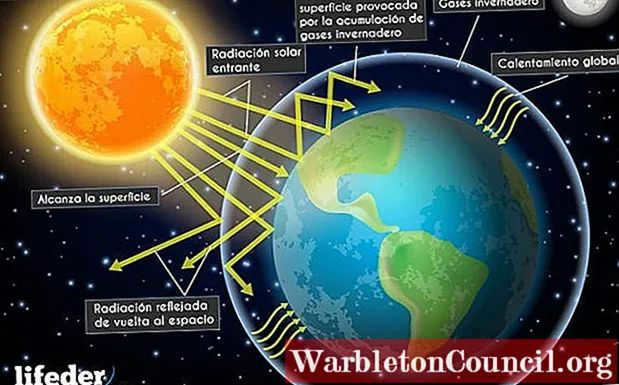
Certain gases in the atmosphere permit the passage of radiation, which warms up the Earth and supplies energy for photosynthesis and other biological processes. The warmth produced (in the form of long-wave radiation) is partially trapped and reflected back to the Earth.
This helps to sustain a favorable temperature range for life on the planet, with an average temperature of 15 ºC. Without an atmosphere, the average temperature on the planet would be -18 ºC.
Variation in daily temperatures
The fluctuation in temperature throughout the day is influenced by the heating of the air above the Earth’s surface by the sun during the day and its cooling during the night. This change is also affected by factors like altitude, presence of clouds, humidity, and atmospheric stability.
Pressure of the Atmosphere
The pressure of the atmosphere is the gravitational force exerted on the air mass above the Earth’s surface (the weight of the air). This pressure varies with temperature, as warmer air is lighter. These factors work together to create climate patterns by generating winds, which in turn create ocean currents.
Moreover, the atmospheric pressure at the Earth’s surface is crucial for the presence of liquid water on our planet.
Density and flight
The troposphere, the lowest layer of the atmosphere, contains the majority of the air and has a specific density. This air density enables various forms of flight, including birds, insects, flying mammals, and human flight with aircraft.
Atmospheric circulation
Temperature differences within the troposphere generate winds by causing variations in atmospheric pressure. This occurs as certain gases, such as oxygen, CO₂, and water vapor, absorb heat. As these gases heat up, their density decreases, causing molecules to spread apart, become lighter, and rise. This leads to a decrease in atmospheric pressure in the region, creating a vacuum that nearby air masses flow into, resulting in the formation of winds.
These factors, in turn, generate surface ocean currents that play a vital role in the redistribution of heat across the Earth’s surface. Conversely, winds are responsible for dispersing water vapor that arises from the process of evaporation, which subsequently cools and condenses as it ascends, resulting in rainfall.
Origin and Development
The origin and development of the Earth’s atmosphere are interconnected with the origin and development of the solar system following the occurrence of the big bang.
Formation of the Solar System
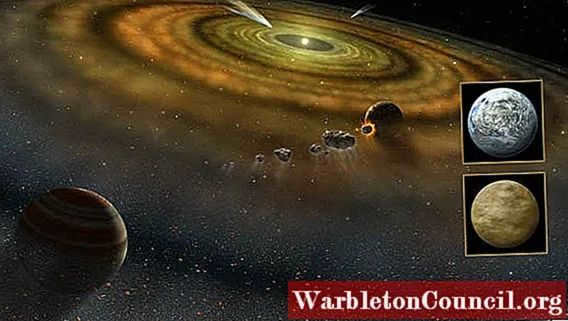
The formation of our system is believed to be the result of a fortuitous gathering of matter moving and rotating in space. This matter eventually accumulated at a specific location, which would later become the center of our solar system, primarily due to the force of gravity.
As a consequence, the planets that are farthest from the center experience a distinct cooling process, resulting in them being the coldest in the system. The Sun, occupying the central position, plays a crucial role in this arrangement. Subsequent planets were formed by a cluster of particles at various distances from the center, resulting in each planet having unique characteristics based on its position.
Terra
The ProtoTierra, also known as Terra, came into existence approximately 4.5 billion years ago through the aggregation of multiple small rocky celestial bodies called planetesimals. These planetesimals were primarily composed of oxides, metals, and silicates.
Due to its relatively smaller mass, Terra was unable to retain significant amounts of hydrogen and other lightweight gases. The loss of these gases resulted in a cooling effect on the planet, leading to the consolidation of its core, which primarily consists of the heaviest elements, iron and nickel.
Meanwhile, the lighter gases, such as silicates, formed the mantle and crust of Terra, with the gases being concentrated in the outermost layer. This region contained gases that were so light that they were able to escape the gravitational pull of the developing planet.
The Atmosphere of Earth
The Earth’s atmosphere has undergone three major stages of evolution, namely the primary atmosphere, secondary atmosphere, and biotic atmosphere.
The Primary Atmosphere
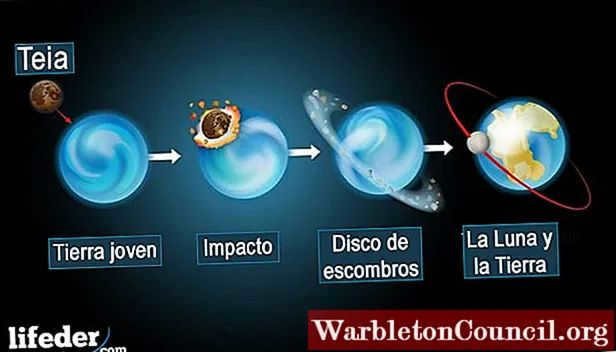
The initial atmosphere of the planet is estimated to have formed approximately 4.45 billion years ago as a result of the impact that created the moon. Following this event, the planet underwent planetary differentiation, resulting in the formation of a core, mantle, crust, and atmosphere.
However, the atmosphere at this time was highly unstable, with the loss of light gases into space during the cooling process of the Earth. These light gases, such as neon and argon, were lost in significant quantities due to their lightweight nature.
During this phase, the primary gases present in the atmosphere were those from the solar nebula, including hydrogen (H2). Additionally, volcanic activity contributed gases such as carbon dioxide (CO2), nitrogen (N2), and water vapor (H2O), resulting in a strongly reducing atmosphere.
Secondary atmosphere
Approximately 4 billion years ago, around 100 to 500 million years ago, the composition of the atmosphere transitioned to a mildly reducing state. This transformation was largely influenced by the significant late bombardment event, during which Earth was bombarded by carbon- and water-rich asteroids.

It has been demonstrated that meteorites and comets contain significant quantities of water, carbon dioxide (CO2), methane (CH4), and ammonia (NH3). Conversely, volcanic activity has resulted in the release of substantial amounts of carbon dioxide (CO2) and nitrogen (N2) into the atmosphere.
During this time period, the development of life in the atmosphere is attributed to the presence of methanogenic protobacteria approximately 4000 years ago. These microorganisms consumed carbon dioxide (CO2) and produced methane (CH4), leading to a decrease in the former and an increase in the latter gas.
Biotic or atmospheric flow
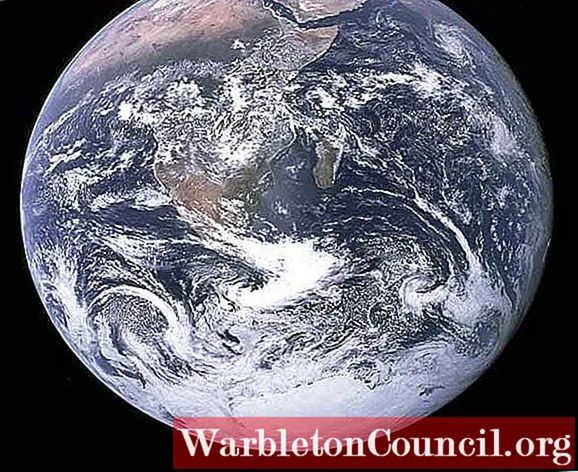
Scientists estimate that the formation of an oxygen-rich living atmosphere started around 3.1 billion years ago. This was made possible by the emergence of the first organisms capable of harnessing solar energy to produce chemical energy, also known as photosynthetic organisms.
Initially, these organisms were cyanobacteria, which released oxygen as a byproduct of photosynthesis. This led to a significant increase in oxygen levels in the atmosphere, known as the Great Oxidizing Event, which occurred approximately 2.4 billion years ago.
As oxygen levels rose, the amount of methane in the atmosphere decreased due to photochemical recombination. Additionally, ultraviolet radiation caused O2 molecules to dissociate into atomic oxygen (O), which then combined with other O2 molecules to form ozone (O3).
So, apart from nitrogen, the extratosphere also developed an ozone layer.2 Volcanic eruptions contributed to the formation of this layer, as the dominant gas emitted by volcanoes is not very reactive and does not readily form minerals. Consequently, it accumulates in the atmosphere.
References
- Kasting, J. F., & Catling, D. (2003). The evolution of a habitable planet. Annual review of astronomy and astrophysics.
- Mercado, J. (1999). Photosynthesis and changes in atmospheric composition. Science for the International Day.
- Pla-Garcia, J. & Menor-Salvan, C. (2017). Chemical composition of the primordial atmosphere of planet Earth. Chemical Research. Annals of chemistry.
- Quintero-Plaza, D. (2019). A brief history of Earth’s atmosphere. AEMET meteorological calendar.
- Sagan, K. & Mullen, G. (1972). Evolution of atmosphere and surface temperature on Earth and Mars. Science.
- Tian, F., Cartoon, O. B., Pavlov, A. A., and De Sterk, H. (2005). The early Earth’s hydrogen-rich atmosphere. Science.
The atmosphere – the gaseous envelope surrounding planet Earth and rotating with it. The field of study that combines physics and chemistry to understand the atmosphere is called atmospheric physics. The atmosphere plays a crucial role in determining the weather on Earth’s surface, and the study of weather is known as meteorology. Meteorology also investigates long-term climate variations, which is the subject of climatology.

In terms of dimensions, the atmosphere extends around 1500 kilometers from the Earth’s surface. The overall mass of air, which is a combination of various gases constituting the atmosphere, is estimated to be around 5.3 * 10 15 tons. The molecular weight of pure dry air is 29. At sea level and a temperature of 0°C, the pressure is 101,325 Pa or 760 mm Hg. The critical temperature is 140.7°C, and the critical pressure is 3.7 MPa. The solubility of air in water at 0°C is approximately 0.036%, while at 25°C it is 0.22%.
Atmospheric pressure refers to the force exerted by the air in the atmosphere on objects and the Earth’s surface. The standard atmospheric pressure is 760 mm Hg (101 325 Pa). As altitude increases by one kilometer, the pressure decreases by 100 mm.
Composition of the atmosphere.
The weather and climate determine the physical condition of the atmosphere. The essential elements of the atmosphere are air density, pressure, temperature, and composition. As altitude increases, both air density and atmospheric pressure decrease. Temperature also varies depending on altitude. The vertical structure of the atmosphere is characterized by different temperature and electrical properties, as well as different air states. The main layers of the atmosphere are the troposphere, stratosphere, mesosphere, thermosphere, and exosphere. The regions between these layers are known as transitional regions, such as the tropopause and stratopause.
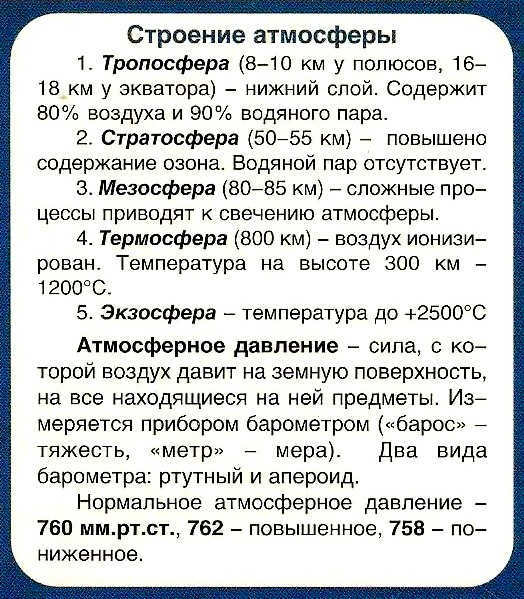
The troposphere is the lower layer of the atmosphere, which is the most extensively studied. It extends up to a height of 8-10 km in polar regions, 10-12 km in temperate latitudes, and 16-18 km at the equator. The troposphere contains about 80-90% of the total mass of the atmosphere and almost all of its water vapor. As you ascend every 100 m, the temperature in the troposphere decreases by an average of 0.65 °C, reaching as low as -53 °C in the upper part. The uppermost layer of the troposphere is known as the tropopause. This layer is characterized by strong turbulence, convection, and the concentration of water vapor. It is also the region where clouds form and cyclones and anticyclones develop.
Stratosphere is a section of the atmosphere located between 11 and 50 kilometers above the Earth’s surface. It is known for its stable temperature conditions, with a minimal change in temperature between 11 and 25 kilometers (referred to as the lower stratosphere) and an increase in temperature from -56.5 to 0.8 °C between 25 and 40 kilometers (known as the upper stratosphere or inversion region). The temperature remains constant at 273 K (0 °C) from an altitude of approximately 40 kilometers until 55 kilometers. This region with a constant temperature is called the stratopause and serves as the boundary between the stratosphere and the mesosphere.
Within the stratosphere, there exists a layer known as the ozonosphere (also referred to as the “ozone layer”), which acts as the upper boundary for life within the biosphere. Ozone, a crucial component of both the stratosphere and mesosphere, is predominantly formed through photochemical reactions occurring at approximately 30 km above sea level. At normal pressure, the combined mass of ozone would create a layer approximately 1.7-4 mm thick. This layer serves the vital purpose of absorbing the Sun’s harmful ultraviolet radiation, which can be detrimental to living organisms. Ozone (O3) is a form of oxygen that occurs as an allotrope and is produced through a chemical reaction, often following rainfall. Once formed, the resulting compound rises to the upper levels of the troposphere. Ozone is characterized by its distinctive odor.
The stratosphere effectively blocks most of the UV radiation with wavelengths between 180 and 200 nm, allowing for a transformation of energy. This transformation leads to various effects, such as changes in magnetic fields, molecule breakdown, ionization, and the formation of new chemical compounds. These processes are visible in phenomena like the northern lights, lightning storms, and other glowing manifestations. Unlike the troposphere, the stratosphere contains very little water vapor.
The mesosphere, on the other hand, starts at 50 kilometers and extends up to 80-90 kilometers. As you go higher into the mesosphere, the temperature drops significantly, reaching as low as 88°C at heights of 75-85 km. The upper boundary of the mesosphere is known as the mesopause.
The thermosphere (also known as the ionosphere) is the layer of the atmosphere that comes after the mesosphere. It starts at an altitude of 80-90 km and extends up to 800 km. In the thermosphere, the temperature of the air increases rapidly and consistently, reaching several hundred or even thousand degrees.
The exosphere is the diffusion zone, the outer part of the thermosphere that is located above 800 km. The gas in the exosphere is extremely rarefied, and particles from here escape into interplanetary space (dissipation).
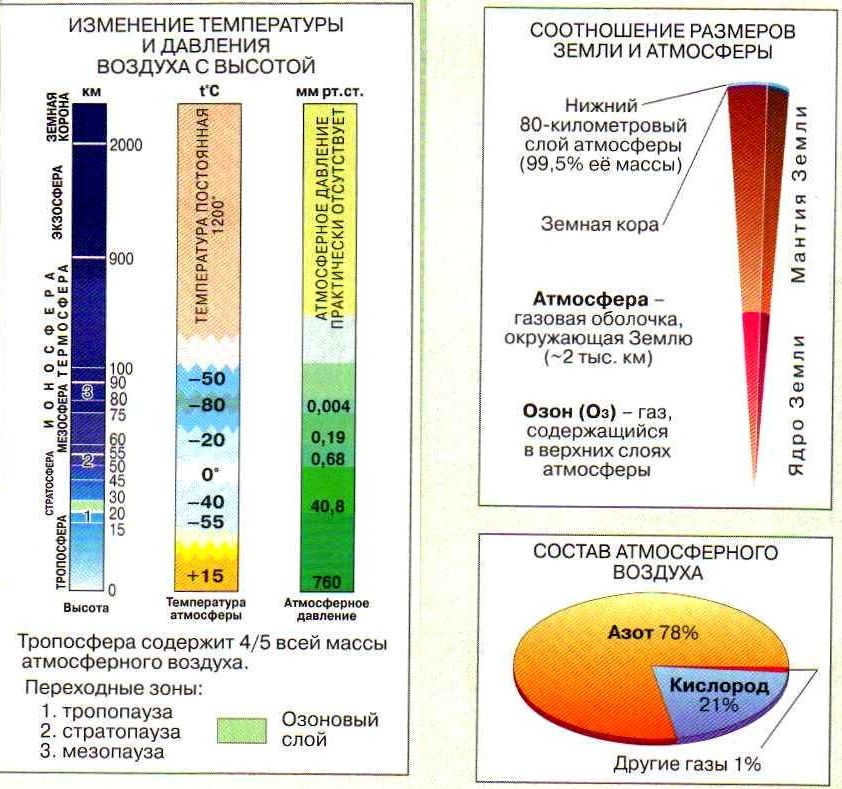
The Composition of the Atmosphere
From the Earth’s surface up to 100 km in altitude, the atmosphere consists of a well-mixed mixture of gases. As we move higher, the distribution of gases changes based on their molecular masses. Heavier gases are found in lower concentrations as we move further away from the surface. This change in gas density also affects temperature, with the stratosphere being around 0 °C and the mesosphere reaching temperatures as low as -110 °C.
At an elevation of approximately 2000-3000 km, the exosphere transitions gradually into the near-space vacuum which contains highly sparse interplanetary gas particles, predominantly composed of hydrogen atoms. However, this gas constitutes merely a fraction of the interplanetary material. The remaining portion consists of minuscule particles derived from comets and meteors. Furthermore, this space is permeated by electromagnetic and corpuscular radiation originating from the sun and the galaxy.
The atmosphere is made up of several layers, with each layer having its own unique characteristics. The troposphere makes up the majority of the atmosphere, accounting for about 80% of its mass. The stratosphere is the next layer, making up about 20% of the mass. The mesosphere is a much smaller layer, making up less than 0.3% of the total mass. Finally, the thermosphere is an even smaller layer, making up less than 0.05% of the total mass.
In addition to these layers, there are also two layers distinguished based on their electrical properties: the neutrosphere and the ionosphere. These layers play a role in the transmission and propagation of radio waves.
It is currently believed that the atmosphere extends to a height of 2000-3000 km, although further research is needed to fully understand its upper boundaries and interactions with outer space.
There are two distinct regions in the atmosphere based on the gas composition, known as the homosphere and the heterosphere. The heterosphere is characterized by the separation of gases due to the influence of gravity, as the mixing of gases at this altitude is minimal. As a result, the composition of the heterosphere varies. Directly below the heterosphere is the homosphere, which is a well-mixed and uniform part of the atmosphere. The boundary between these two regions is called the turbopause and is located at an altitude of approximately 120 km.
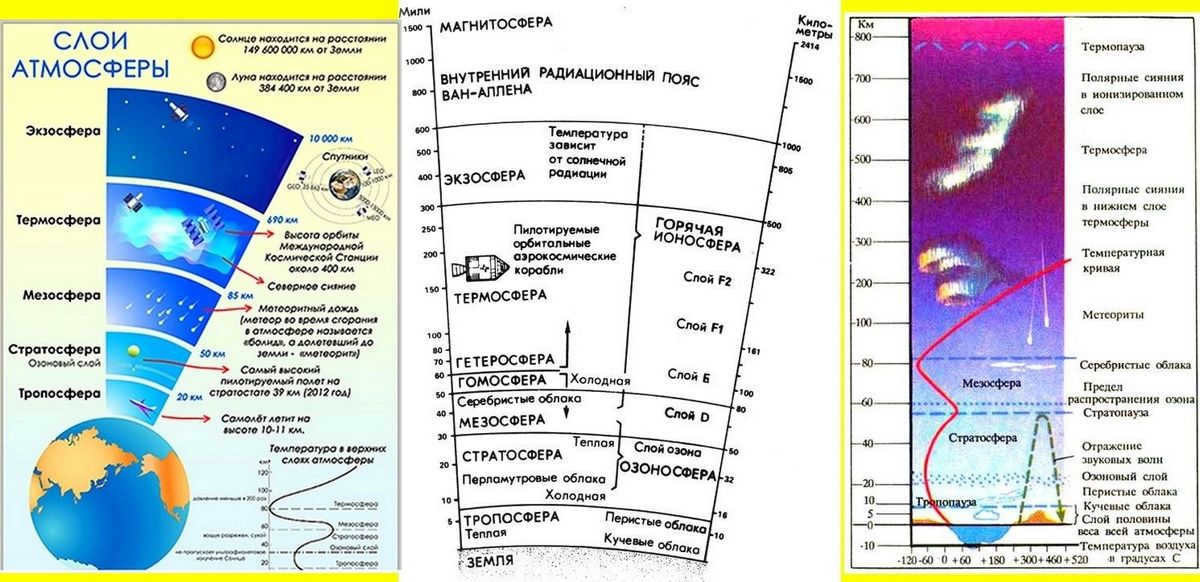

Structure of the atmosphere
The Earth’s atmosphere is the envelop of air surrounding the Earth, primarily composed of gases and various impurities such as dust, water droplets, ice crystals, sea salts, and combustion products, with their quantities being subject to change. The primary gases present in the atmosphere are nitrogen (78%), oxygen (21%), and argon (0.93%). The concentrations of these gases within the atmosphere remain relatively constant, with the exception of carbon dioxide CO2 (0.03%).
The composition of the atmosphere includes various gases such as SO2, CN4, N, CO, as well as hydrocarbons, HCL, and vapors of HF. Additionally, there are trace amounts of Hg, I2, and NO, along with several other gases. Within the troposphere, there is a constant presence of aerosol, which consists of suspended solid and liquid particles.
